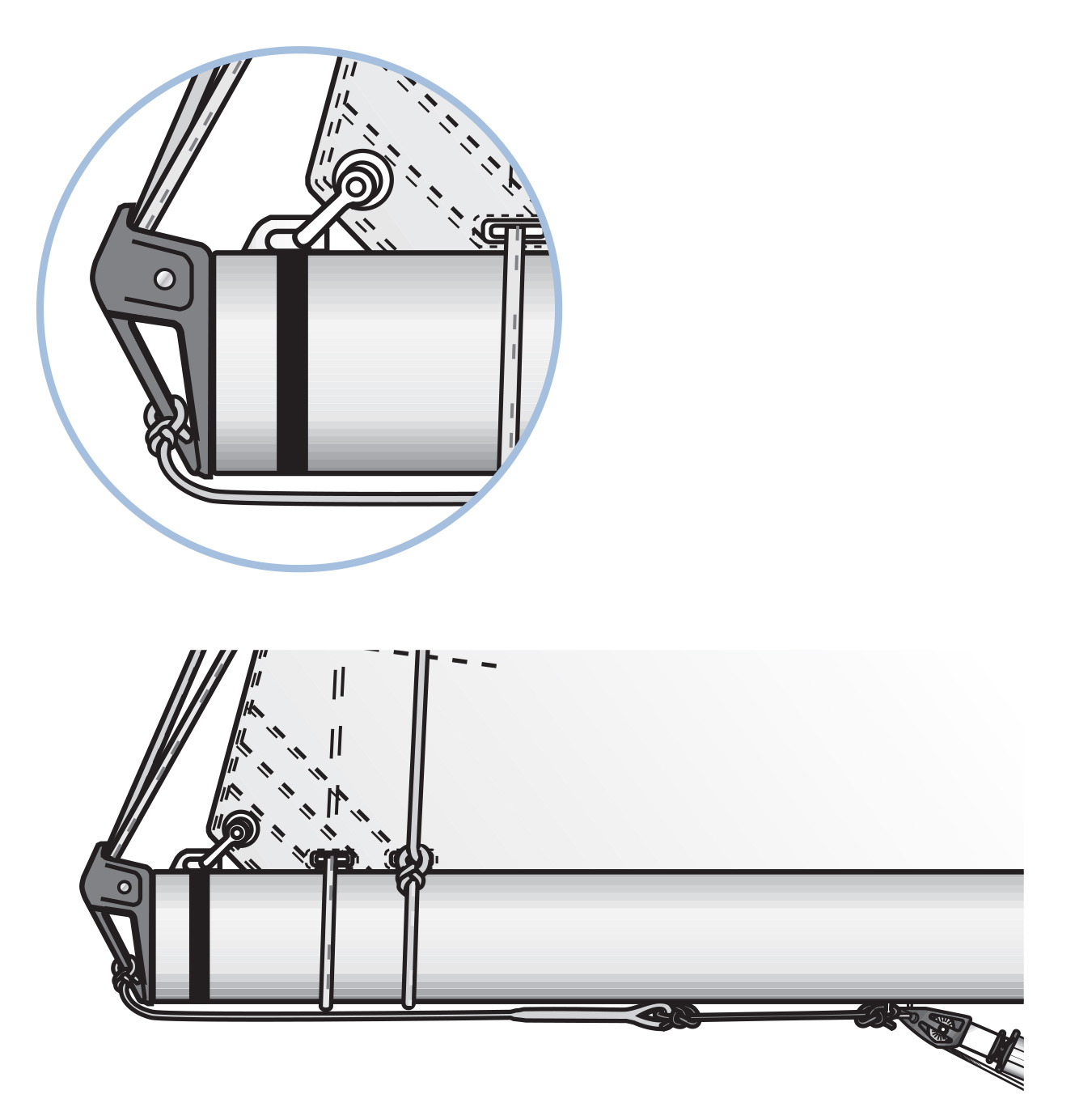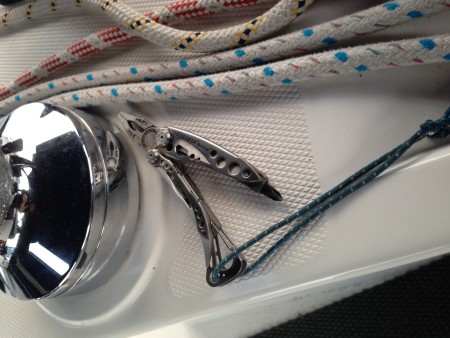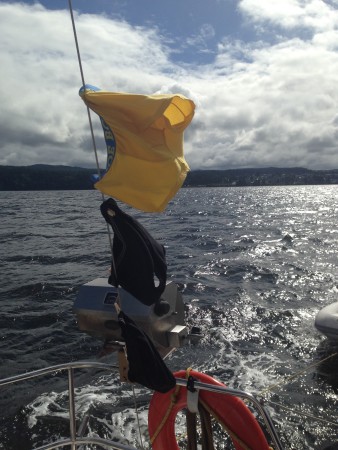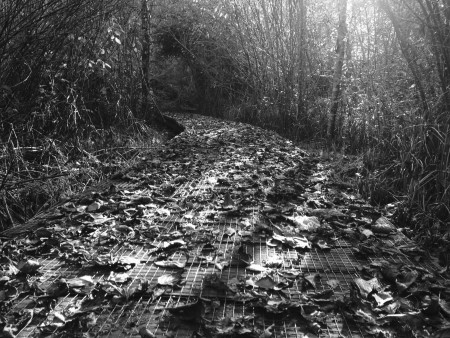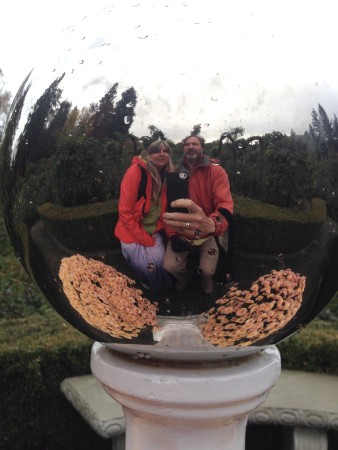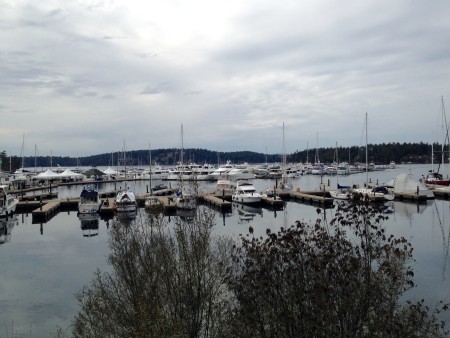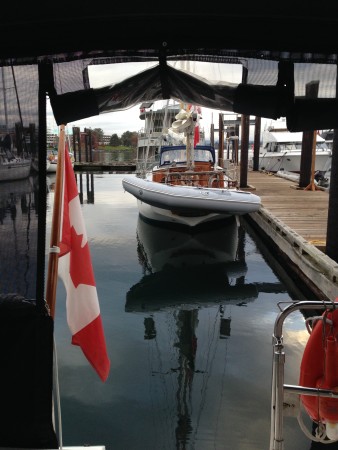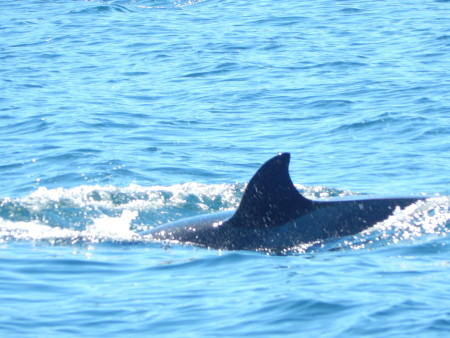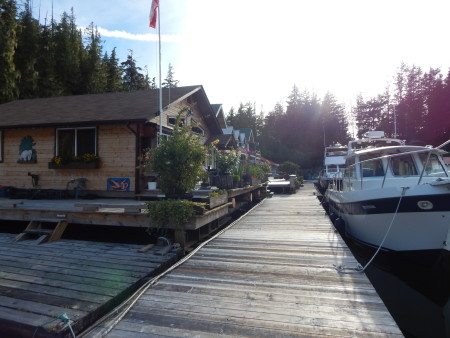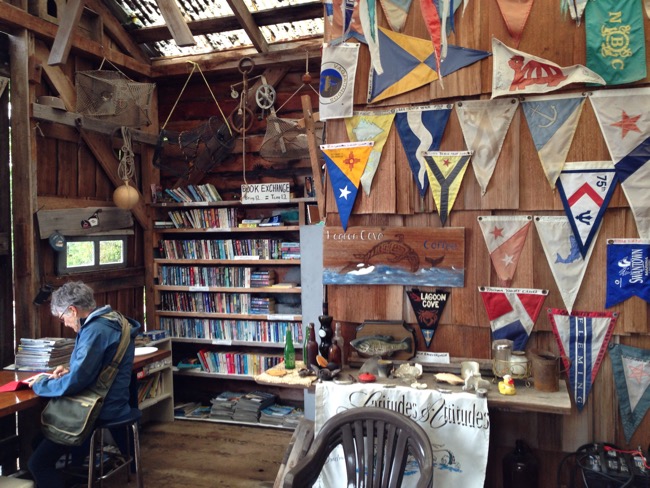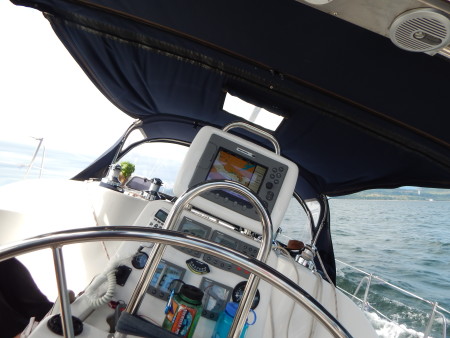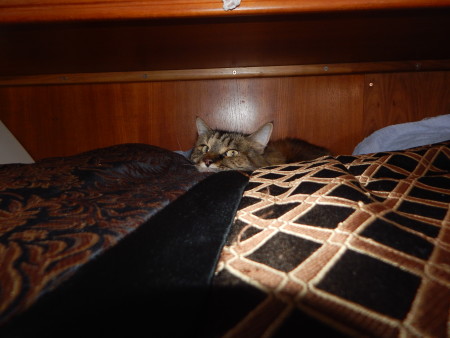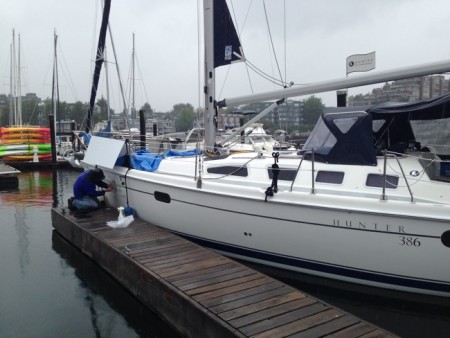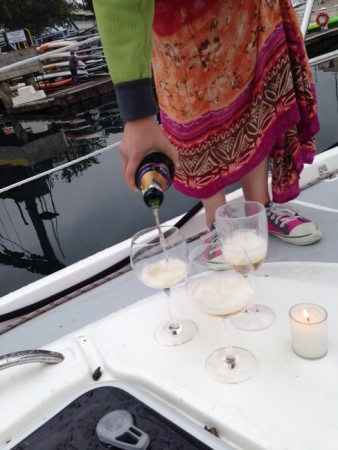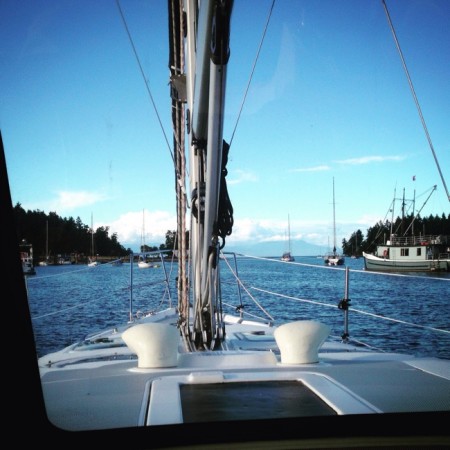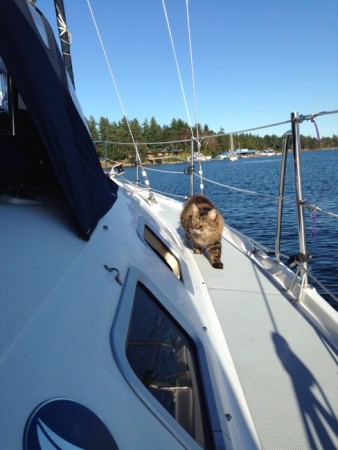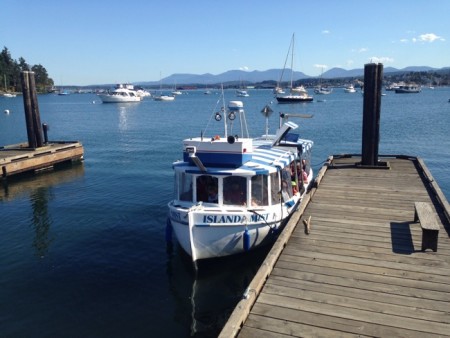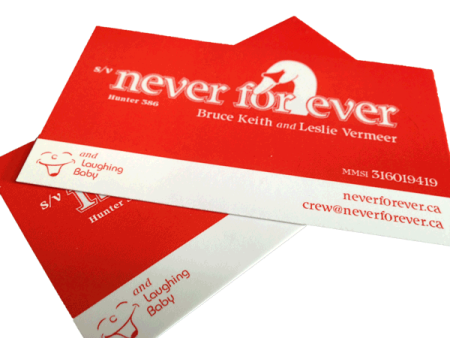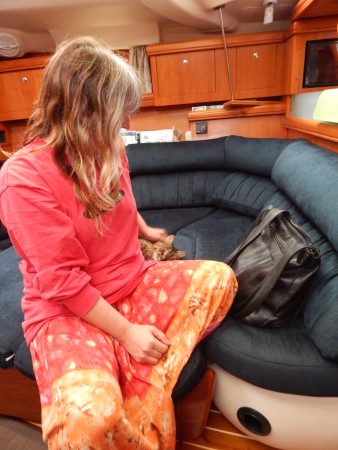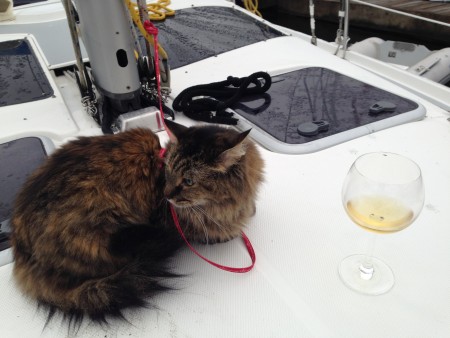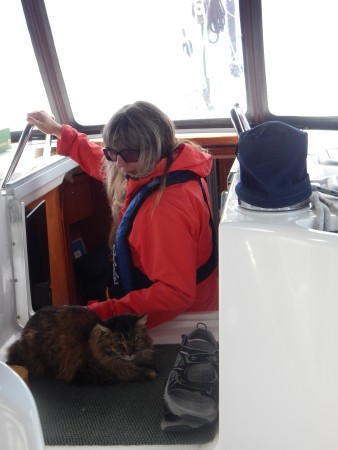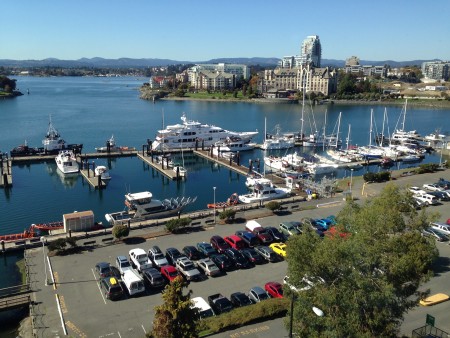
In my, albeit limited, experience, boating/cruising in the PNW has seemed so far to come in three distinct varieties. The first, the kind the beginner most often sees and the vast majority of our experience so far, is the short cruise. Hop on your boat (or charter), tour the Gulf Islands or visit Desolation Sound and then be tied up at home a week or two later. The second variety is the long trip. Stock up on provisions and head out for a few months or even the whole season and you’ll be back when you are back. And our newly discovered third boating experience is life at the dock. It’s cold, you have to work, or you just plain don’t want to be away, so you are tied up and enjoying all (most) of the conveniences of home. We have been lucky enough to experience all three of these varietals this year — one and a half weeks in the gulf islands in the spring, 2 months Vancouver to Victoria via the Broughtons in late summer and 2 months and counting tied up at the inner harbour in Victoria. So I thought I would do a bit of compare and contrast.
Planning
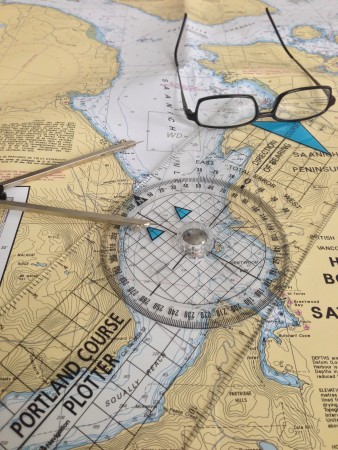
Short You’ve only got a week and you want to make the most of it. So you spend time online and with the cruising guides and either come up with a specific plan and loose itinerary or schedule the bejeezus out of each and every day before you ever get to the boat. If you are chartering, you even factor in departure and arrival times to maximize your dollar. You know where you need to be and how far from home you are, and despite inevitable changes, you are pretty much committed to sticking to a plan.
Long When taking off for the season, the planning is just as intense, if not more so, but the execution is a lot more fluid. Maybe you just have a direction and a list of wants. You need more charts and more cruising guides and anchorage books, because who the hell knows where you will end up this time. You might meet someone and decide on a bit of buddy boating and then there goes any preplan out the window. So plan hard and remember the old adage, “the most dangerous thing when cruising is a schedule.”
At the Dock Well, you need to do you research, do some cost analysis and look into the location of amenities like groceries, propane and the all-important liquor store, but after that it is just the little things that you may or may not care about. I will say a little effort put into researching slip location and prevailing winds isn’t a bad idea and taking a look at available coffee shops and libraries can make stormy days a lot more enjoyable. The biggest question for us was: could we get high speed internet at the dock?
Power
Short The boat has batteries right? And a way to charge them too? Then don’t worry about it. Most charterers don’t even get a lecture on battery conservation or power usage beyond “it isn’t advisable to use the microwave at anchor.” On a short trip you are invariably at the dock more often and motoring between locations every second day. And when you are on the dock you will pay up for power with very little thought. It’s a short trip, and power’s cheap. We rarely paid much attention to power beyond minimizing light usage.
Long This is the trip where a little learning is a dangerous thing. The things you hear: NEVER run you batteries below 50%! Your puny alternator can’t top up the batteries fast enough! Anchor lights are a huge draw! All lights are a huge draw! What do you mean you didn’t replace them all with LEDs? Turn down your fridge! Sure, the iPod speakers are crappy but they use less power than the boat stereo, Sheesh! No you can’t recharge your laptop today! Did you check the specific gravity of you batteries yet? Sure it’s a diesel heater, but the fans consume power…are you sure you are cold?

The advice you get in respect to your power usage is plentiful and often terrifying. And if all you have is a voltmeter, trying to figure out the state of your batteries to avoid the ever-looming 50% level is impossible, yet all-consuming. Don’t let the batteries dip below 12.2v. But don’t trust the meter reading if the batteries haven’t rested for x hours with no load. You just kind of get caught up in trying to balance the flaky math and visual input and are never sure of just where your batteries are until you’ve been at dock and plugged for a full 24 hrs. Personally, our battery monitor was the best couple of hundred bucks we ever spent. Unfortunately we did it near the end of the trip.
On a long trip you need to conserve cash and an anchorage is your best friend. Power is expensive in some of the out-of-the-way marinas (up to $20 for 30amp service), so even if you do tie up to reprovision or top up the water, chances are you might forgo the expense. Day to day you don’t go more than a couple of hours without thinking about power consumption, generating more power and which light is on and for how long. It can be stressful, especially if some of the crew aren’t on the same page. You also might find yourself buying very expensive LED bulbs or pricing out generators in faraway places to try and relieve the strain of constant worry.

At the Dock How long is your power cord? And how much amperage do the two heaters use, because we hate tripping the damn breaker. That was pretty much it. We still maintain some discipline when it comes to how many lights are on at once, but the fridge and freezer are cranked up to high and the stereo is on whenever we are aboard. And after a couple of weeks of this you even start using the microwave. But then again, we still turn the breakers for the lights off every morning…
Water
Short You start the trip with a full tank. You will likely top it off once during the trip. You fill it up when you dock the boat at the end of the trip. That’s pretty much that. Chances are you will pay for showers at the marinas and swim a time or two. And it’s likely you will pack along some bottled water to drink, but we’ve never actually managed to drink it all on a short trip. And with all the motoring and staying on docks, hot water is rarely an issue. Just be sure to shower while the water is still hot before you go to bed rather than in the morning when it’s cold.
Sunny afternoons at the dock are a perfect time to scrub the boat and cool down and the dodger is always clear of salt spray and bird droppings. Sure the occasional marina might try and restrict your water usage, but what the hell, there’s another one just 10 nm down the channel.
Long Water usage is another one of those constant worry points. Not as complicated or arcane as power, but still fraught with its own idiosyncrasies. To start with, a long trip often includes visits to places and islands that other have no supply available for visitors or, if it does, it’s potability is usually suspect. So right off the bat, you have to start thinking about water vs. drinking water. And once you’ve “contaminated” your water tanks, you pretty much have to empty them again before trying to go back to using them for a drinking supply — which seems like a horrible waste since you’ve been doing everything you can to conserve water.
Because you probably will have to conserve, especially in the drought-prone islands of the PNW, you find yourself filling up old 2 litre pop bottles and milk jugs “just in case.” And don’t even think about washing the boat. Just don’t. Dishes once a day, baby wipes not washcloths, and maybe I will just skip the shower since the $5 the marina wants just isn’t worth it.
One of the first things we bought was a solar shower. Then we bought another. Our head has a shower stall with an opening hatch right above so the solar showers were great for nights two and three… at least until it got to cloudy. The baby wipes turned out to be the preferred alternative to the not-quite-freezing, barely-warmed output of a solar shower on a cold day in the PNW. And due to the power costs mentioned above, we often didn’t have hot water even at dock. I actually took to washing up right after we got underway. The motor would have run a little bit even if we mostly sailed, and then it would reheat whatever I used to be saved for others or dishes.
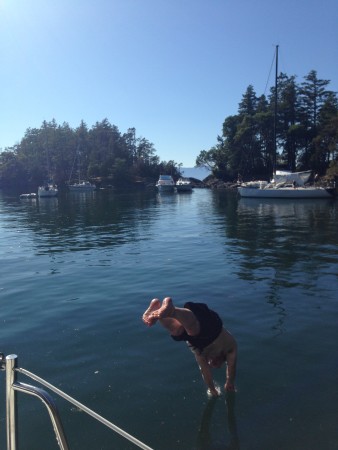
Marina showers cost money and again, the further off the beaten path you go, the more they cost. Still a hot shower and shaving with hot water are treats to be enjoyed despite the cost.
At the Dock Once again, a lot of our conservation habits stayed with us at dock but are generally much more relaxed. We still don’t fill the sink to wash dishes and showers are still a two stage process to conserve water. But we fill the tank about once a week from the dock and don’t think much about it. I still have back-up bottles of water stashed away in case it freezes and the dock water is cut off unexpectedly, but it’s more of an emergency back-up than anything we are likely to need.
Hot water is plentiful and we’ve taken to actually showering on board more often than we did when cruising. Showers at the marina are $1/3 minutes so they aren’t much more luxuriating than being on board. And walking up the dock before you are entirely awake is ok I guess, but why not just stay in your PJs and lounge around the boat with a coffee. That’s not to say I don’t load up with loonies once in a while and indulge, but that just makes it a special treat—who needs a spa anyway?
Provisions
Short Short trips are often a provisioning nightmare, especially if you don’t own the boat or your trips are too separated in time to keep much aboard. For us, being without a vehicle, the location of a grocery store and access to liquor was always part of deciding where we would charter from. Nanaimo Yacht Charters was pretty distant from any convenient grocery stores, but they had a loaner car free to use. Granville Island had a great market within a stone’s throw, but it was a longer slog to make it to a store for buying staples. And without a car, groceries (and booze) can get pretty heavy, which often necessitates either a cab or several trips.
And then there’s the meal planning, the available sizes of products and the waste at the end of the trip. It’s hard to justify a 5 lb sack of flour or a 500ml bottle of syrup but what’s cruising without pancakes? And a short trip means you should try and account for every night aboard, even though you don’t know how often you will eat out. You plan for the best and keep your fingers crossed. And keep in mind a short trip doesn’t always involve a lot of urban stops, so resupply sometimes won’t be as easy as you think if you’ve forgotten something.
We liked to make sure we brought things like spices and dried goods like pasta or rice from home, even peanut butter (in a small container) was a good thing to pack if we had room since it was unlikely we would use enough to warrant buying any. I’ve taken to premixing my dry ingredients for pancakes so all I need is eggs and milk. But resign yourself to tossing food at the end of the trip. It’s especially sad when you didn’t get around to eating those salmon steaks or pork chops, but even tossing half a pound of sugar or a three-quarters full box of granola seems like such a waste.
Long I think provisioning things for a long trip is actually the easiest of the three. If you make sure that the beginning of the trip has several stops near grocery stores, you buy provisions in smaller increments and, since time is on your side, making a run to the market every day—even if you have to get there by dinghy—is more of an adventure than a problem.
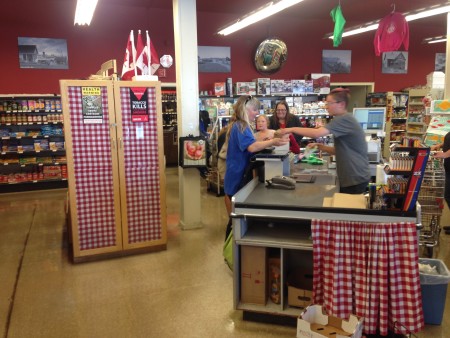
And since you are stocking up for the long haul, what you buy is determined more by storage than anything else; so go for the jumbo bags of flour and rice and don’t worry about it. We did have to balance meat and bread against freezer space and power consumption. The freezer never really kept things completely frozen when we had the power dialled down. If possible we would buy meat when we were at the dock and crank the freezer up to freeze things, and then they would stay frozen longer after we dialled it down again.
I think the biggest issue for me was bread. I like bread and I like it fresh (i.e. not Wonderbread or it’s ilk). At home I always keep bakery bread frozen and defrost as I use it but aboard a boat this methodology doesn’t work all that well. We therefore usually buy the preservative-laden “wonder” breads that I grew up with or heavier breads like raisin bread and eat a lot of toast after things start going stale. But that doesn’t help with BBQ staples like hotdogs or hamburgers and I think we ended up eating a lot less of those sorts of things. I did eventually learn to make a fairly easy no-knead bread, which helped me get my fix of fresh bread.
Still, the long trip was easiest to handle provision wise as you tailored your expectations and forwent fresh produce when it wasn’t available and pigged out when it was. We had whales after all, so who needs fresh spinach? And I lost 10 pounds so that was a bonus.
At the Dock The problem of living on the dock is the temptation of all the local restaurants and the expectation that you can eat like you always have ashore. But as spacious as our boat is, it still doesn’t have the pantry or refrigerator of our condo. And the budget really doesn’t stretch to eating out every night…at least after the first few weeks have gone by.
One of the downsides of our Victoria winter location is the three major grocery stores are all approximately 1.5 km away. And since we have no car it makes buying a lot of supplies a challenge. So we bought a small two-wheeled cart and try and to shop several times a week; but bags of flour, cases of beer and jugs of juice all weigh enough to start to make it a bit of a grind. We are constantly balancing what our eyes and taste-buds want, with what we can manage to cart back to the boat on any given trip. Overall it’s not much different from short or long trips but after a while the frustration kicks in and it seems a bigger deal than it actually is. But perception is everything…
Laundry
Laundry is the same chore on a boat as it is everywhere else. You just do it with a different attitude. In all three scenarios, the common factor is that you likely only have a quarter of your normal wardrobe and tend to conserve and reuse much more than you ever would at home. The big difference is in the perspectives.
Short Laundry? Just wash a pair of shorts in the sink, don’t wear socks and don’t worry about it.
Long Have I worn these socks two — or three — times? Hmmmm, maybe one more go…
At the Dock Laundry? Again? Sigh. Let’s go buy some more socks.
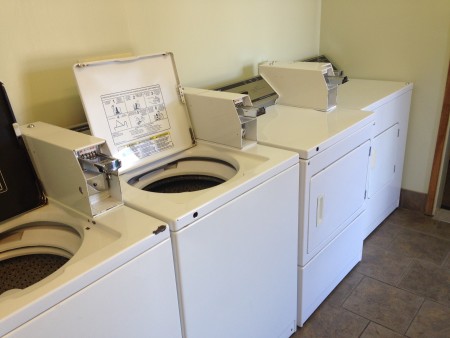
Garbage & Recycling
Short Simple. Find a place to stow it temporarily and then dump it all each time you get off. Most marinas offer at least a free bag of garbage along with moorage, so why sweat it.
Long Like water and power before them, garbage is the bane of the long trip. We try not to throw anything besides chicken bones overboard but occasionally the composting goes as well. Marinas in out-of-the-way places can be reluctant to take any garbage they can’t burn so sorting becomes an issue. And stowing garbage for weeks starts to take up valuable space in cockpit lockers.
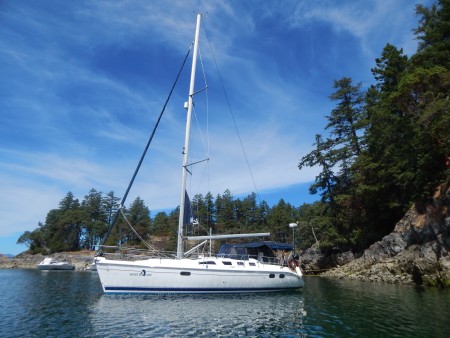
Even recyclables with deposits can be hard to get rid of once you are out in the Broughtons. Cans over bottle, boxed wine over glass—it’s far easier to cope with if you make better choices before you leave the store.
At the Dock The marina has garbage cans, recycling bins and even a compost bin so managing it is pretty easy. The only predicament is do we wander around in search of a bottle recycler or just donate them to one of the many, many, local collectors that wander the wharfs. So far, we donate, but that might change as the purse strings tighten.
Gear in General
Short What you bring along on a short trip is usually based on what you can carry and what you will likely need giving the season or cruising grounds. Some warm clothes, hats, maybe one pair of hiking shoes, an inflatable pfd if that is your thing, a knife maybe, and a camera. I have also been known to lug along a small inverter just in case the charter boat doesn’t have one.
Long The long trip is a three-way balance between transport, storage, and stowage. How much can you carry to and from the boat? Is there room on the boat for it? And can you find a place for it that will survive 30 knot winds and a 30° heel?
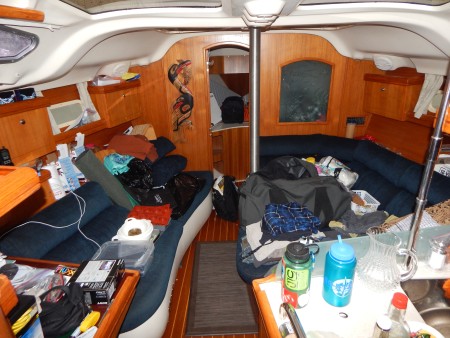
We brought quite a few things along that we had plenty of room for — for example books — but soon discovered that they flung themselves around the boat cabin because we couldn’t find a place to secure them. And while I wanted to bring my entire tool kit, there was no way to actually get it to the boat, even though I had ample locker space to store it. And where do you keep all those expensive charts you bought which is both away but accessible—especially if you are using half a dozen different charts a day?
On a long trip, electronics was surprisingly high on the list of must-haves. Two cell phones, a camera, an iPad for secondary navigation, two ebook readers, a laptop, and external hard drives with movies and music seemed like pretty basic equipment. We also brought several headlamps, safety gear, comfortable pfd’s, several extra pairs of shoes, extra warm layers, the aforementioned books, cruising and nature guides, our recipe books, spare sheets, spare pillows, extra blankets, some nice clothes, and a host of other things that seemed necessary for an extended trip.
At the Dock We have tried to get out sailing even after reaching our winter home, so the addition of clutter has been minimized — but it creeps in. More books, another laptop (because we don’t share so well), more clothes and jackets, some new cookware, heaters and the day-to-day detritus like piles of paper and casual purchases are among the few things that have appeared around the boat since we docked in October. We might add a dehumidifier as it gets wetter and more blankets if it gets colder.
We’ve lost two pillows to mildew so far—they were stored/pushed up against the cold hull for a few weeks without moving—so we have tried not to just shove things in the v-berth like a giant garage—which is the daily temptation—and with such a small space , the necessity of putting things away every day makes any accumulations of stuff pretty noticeable and easy to contain. But I recognize it’s early days yet…
Propane
Short Did you fill the tank(s) before you left? Don’t worry about it.
Long Are both your tanks still certified? No. Oops, well that is going to be a problem. The only thing harder these days than finding a place to refill your propane tank is finding a place to recertify your tank. Luckily local family members with a mini van were able to drive us from Nanaimo to Chemainus and Viper Fuels: the only place I could find on anywhere even close to our route who could do the work.
Refilling tanks these days is a huge pain. All the local gas stations have gone with the exchange system so they don’t have to get training for their staff. And that means the places that can do refills are usually not anywhere easily accessible. Luckily, in more remote areas like Port McNeill there are still some facilities near the docks where you can top up your tank. But in populous areas like the Gulf Islands or the Sunshine Coast? Forget about it.
We have two 10 lb tanks, one of which was used for the BBQ. But after the first tank ran dry and we were literally weeks before I could refill it, I started using the disposable 1 lb bottles on the BBQ and kept the second tank as a spare for the stove. It was that or stop baking, and I like baking.
At the Dock So far we haven’t had to fill up, but according to Google there is a place about two kilometres away that will do it. I guess we will load up the empty tank in our cart and wheel it there. One of out dock mates suggested if I could round up enough tanks that needed filling we could get a truck to come down, but I don’t think that kind of coordination is likely. And I stuck with the 1lb tanks on the BBQ so I am confident we won’t run out of propane at an inopportune moment.
Maintenance
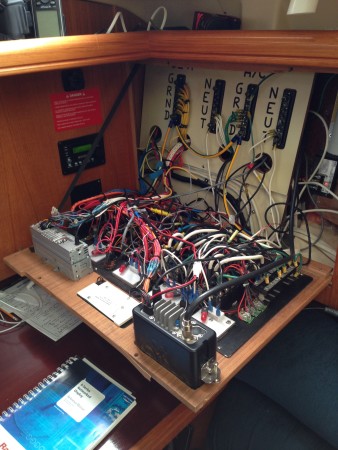
Short Check the oil. Every day. Keep half an eye out for worn or wearing bits and just enjoy.
Long Be prepared. If you are new at this like we are, be prepared to buy things. Stainless slit rings, bolts and screws, a rebuild kit for the head, glue and sealant, new light bulbs, some line, even a few tools. We tried to prepare ourselves as best we could, but there are always projects and time to do them. We definitely found it easier (and cheaper) to tackle multiple small things as we went then to pay for the big things once we were back.
And if you are away long enough in our wind-less summers be prepared to change the oil. Which means you need more tools, buckets and a place to safely dispose of the used oil.
At the Dock Maintenance is more of a intellectual problem than a physical on once you are on the dock. You have to budget time and money and prioritize. Since a lot of the thing you need to work on won’t affect you if you stay at the dock there is a tendency to put them off. Ever seen the skit on Sesame Street where Ernie doesn’t want to fix the window https://youtu.be/JBDlQJMkOlw ?
And if you add up the costs of all the projects you need/want to do, I guarantee you will find it exceeds your budget. So I find myself second guessing where I want my limited funds to go. I think this is the point where the reality of boat ownership really starts to hit home. The definition of a boat is often stated as “a hole in the water you pour money into.” I am starting to believe it.
Downtime
Short On a short trip there generally isn’t much downtime. Or depending on your perspective, it’s all downtime. You flit from destination to destination and relaxing is as simple as the cold beer after the sail with the occasional brilliant sunset thrown in. Staying more than 2 days in one place is a waste of good cruising time so let’s cast off and do it again.
Long I think, in this regard, that long trips are basically a bunch of short trips strung together with downtime scheduled in between. We found most of our down days were spaced about one or two weeks apart where we would end up spending several days tied up in one spot, doing chores, cleaning up and generally enjoying ourselves.
Oh we did deliberately stay at a lovely anchorage for two or three days to soak in the atmosphere but oddly enough it was the multiple days at the dock that that were the most pressure-free. Some of it had to do with monitoring batteries and water and some of it had to do with the imperative to make the most of the opportunity. I think we will have to take even longer trips (4 months+) to truly be able to get relaxed just hanging on the hook.
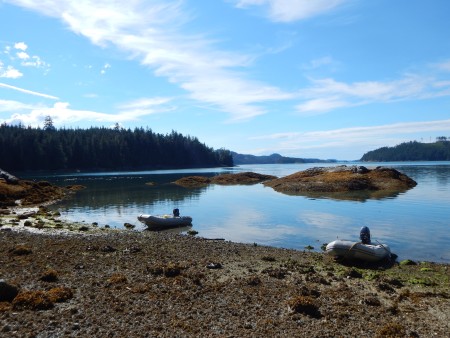
At the Dock Unfortunately, being on the dock is way too similar to being at home. And being workaholics, we tend to want to move right back to 10–12 hr days, 7 days a week. But the benefit of the boat is that with shorter daylight hours it’s easier to make a point of turning off the work and enjoying a game or some tv on the laptop after dinner. So in reality we work closer to standard business hours and try and reserve the weekends for non-work activities. So far, it’s working out pretty good. But I would still rather be cruising.
Special Considerations: Heat and Condensation,
Short Short trips are generally in the summer, at least for us, and keeping cool is more of a consideration that keeping warm. But most boats in the PNW have heaters to take the edge off in the morning if you really need it.
Long We ran the heater about once a week for an hour or two on especially cold mornings. You tend to try and endure the cool temperatures to avoid firing up the noisy heaters when you are anchored in those lovely still coves. But some mornings are just too damp and cold. And since you are on the move, you get plenty of ventilation and air movement and moisture in the cabin is pretty much a non-issue.
At the Dock We are currently using two electric heaters and plan to start supplementing that with the built in diesel heater when the temps start to dip below freezing. The electric heaters are fine except both of them running at full blast (1500 watts) will soon overload our 30 amp service and pop a breaker at 3 o’clock in the morning leaving you with a cold, cold boat.
And you need to keep dorades and hatches open to allow fresh air in to keep the humidity down. As I mentioned we’ve already sacrificed two pillows to mildew. Actually, since I started composing this post a couple of days ago, the total count is now up to three. Spare pillows just seem especially susceptible. So far it hasn’t been to much of a struggle and we have yet to give up the onboard showers, but special care and consideration needs to be taken. We also have started lifting the mattresses occasionally and letting air flow into little used spaces like lockers.
In Conclusion
I am sure that there are tons of things I have missed and plenty of experiences I have yet to encounter, but it’s been interesting to try and enumerate the differences we encountered in the types of boating we did in 2015. I think, as in most things in life, boating is most enjoyable when expectations match the most probable outcomes; it’s just a matter of figuring out what those are. We probably have one more big cruise in store next spring before we are back to real life and having to make do with shorter trips, but after re-reading this post, I guess that doesn’t seem to bad, does it…
And there’s always the chance we might get to sail!



